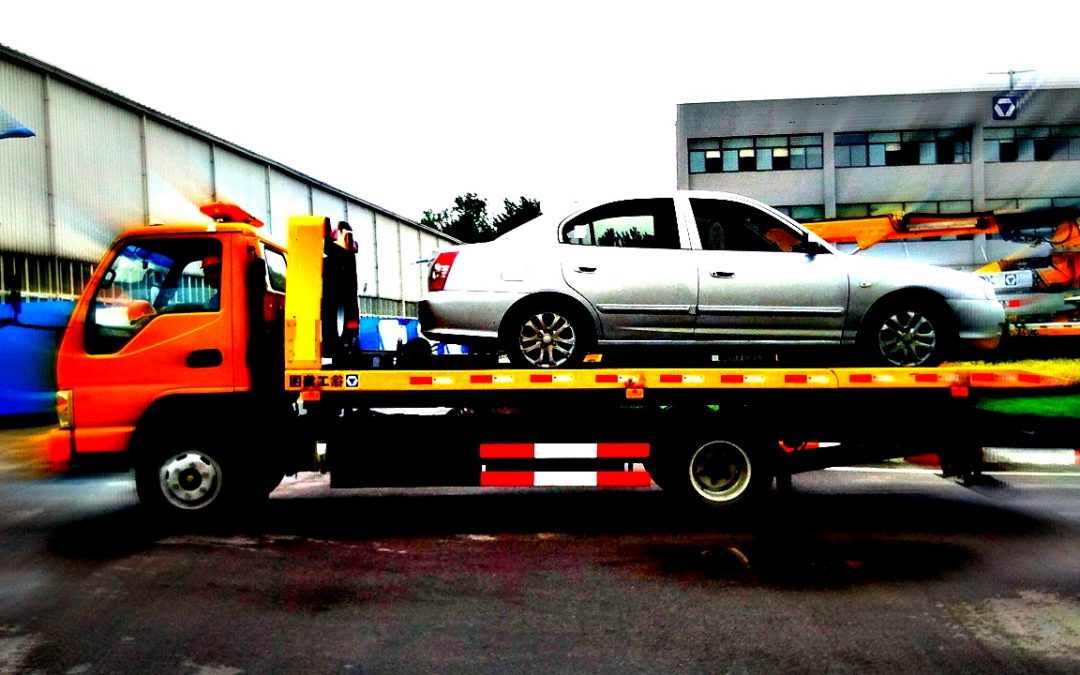
Mag 27, 2020 | The Blog

Illustration from “The Hidden Dimension” by Edward T. Hall © 1966, 1982 Anchor Books Editions
Proxemics, as one definition goes, is the study of spatial distances between individuals in different cultures and situations.
Students of cultural anthropology and non-verbal communication will recall the foundational contribution made by Edward T. Hall in this area, in particular by his book The Hidden Dimension (1966), which deals with the “language of space” in different cultures.
Hall posited that there is a direct correlation between social standings and physical distances between people.
He went on to divide the distance we keep from other individuals into 4 zones, namely Public Space (roughly 4 to 8 meters), Social Space (1.5 to 4 meters), Personal Space (0.5 to 1.5 meters) , and finally Intimate Space (from physical contact to 0.5 meters). These zones serve as a mere indication as they are affected by cultural codes and other factors.
It’s a known fact that gender, status, ethnicity, and social situation will influence distances in each zone.
But all that was settled science until the Spring of 2020.
The Covid-19 pandemic has now redrawn our social boundaries. Possibly for the first time in history, our spaces have been redrafted by legislators and are enforced by law.
Entering an office-building elevator, boarding a subway train, stopping for a chat with a neighbor while walking our dog used to be actions governed by what Hall called our “distance regulators.”
Now there’s a new, added factor that falls under the heading of safety.
How safe do I feel by standing here?
This pandemic will eventually fade away but our new proxemics is likely to stay on.

Apr 22, 2020 | The Blog
 Improvvisare, Adattarsi e Prevalere.
Improvvisare, Adattarsi e Prevalere.
Non è farina del mio sacco, è il motto dei Marines americani.
Quanti di noi avevano fatto altri piani per la Primavera 2020? Direi tutti, senza paura di sbagliarmi.
Quanti di noi hanno reagito alla catastrofe umana ed economica del Covid-19?
Direi molti, ma non so azzardare una percentuale.
Ci sono anche quelli che si sono rassegnati, hanno staccato la spina della loro attività e stanno aspettando tempi migliori per vedere se riescono a ripartire.
Qualcuno scoprirà che darsi da fare dopo la sirena del cessato allarme è troppo tardi.
Chi prevale sulle avversità è chi si è adattato e ha saputo improvvisare.
Vi racconto una storia di questi giorni come me l’ha riferita un amico. Niente nomi, per ovvi motivi, ma la storia è autentica al 100%.
Durante il lockdown, il mio amico ha avuto tutto il tempo per dedicarsi a un progetto che aveva in mente da tempo: cambiare macchina. Ha iniziato a sfogliare i siti dedicati al commercio di auto e dopo poco ha identificato una rosa di vetture che rispondevano alle sue esigenze. Il mio amico cercava:
- Un modello particolare di automobile
- Voleva pagarla una cifra ragionevole
- Aveva un’auto di soli tre anni da dare in permuta
- Non voleva spingersi a più di 300 km dalla sua residenza
Dai primi contatti con i rivenditori di auto selezionati è emerso che:
- L’auto pubblicizzata non era più disponibile, ma ce n’era un’altra simile—ovviamente più cara
- L’auto che lui voleva dare in permuta era valutata una miseria, rendendo fallimentare l’operazione
- Nella migliore delle ipotesi, dopo una piacevole conversazione con il venditore, ci si dava appuntamento a fine emergenza
- Qualcuno non rispondeva nemmeno alla richiesta di contatto
Finché non è arrivata la risposta di un autosalone situato a 30 minuti di distanza. Dopo uno scambio iniziale di informazioni, il venditore ha offerto al mio amico la possibilità di visionare e provare su strada la vettura in vendita.
“Ma come facciamo? Io non posso uscire di casa e voi nemmeno…” ha detto il mio amico perplesso.
Improvise, Adapt, Overcome
Il venditore ha affittato per un paio d’ore un carro attrezzi e ci ha caricato la vettura in vendita. E’ poi andato all’indirizzo del mio amico, gli ha fatto provare l’auto nelle strade circostanti e ha anche avuto modo di visionare l’auto data in permuta.
Nessun vigile fermerà un camion del soccorso stradale con una vettura sul pianale. E’ qui che risiede la genialità dell’idea.
In un’ora l’affare è stato fatto, gli accordi sono stati presi. La transazione si è conclusa secondo la virtuosa formula del Win-Win.
Malgrado abbia accusato un notevole calo dell’attività di compravendita, questo autosalone non ha mai smesso di lavorare dall’inizio dell’emergenza.
Meditate, gente, meditate…

Mar 26, 2020 | The Blog
 Un black swan event è per definizione un avvenimento raro, difficile da prevedere e di enorme impatto.
Un black swan event è per definizione un avvenimento raro, difficile da prevedere e di enorme impatto.
Le reazioni di individui, organizzazioni e governi davanti al verificarsi di tali accadimenti sono le più svariate.
Si va dalla paralisi alla negazione o anche alla reazione impulsiva e grossolana—quella che l’inglese chiama knee-jerk reaction.
Lo stiamo osservando e vivendo in questi giorni, un mese dopo che l’avanzata del Covid-19 ci ha colti di sorpresa e costretti a un’azione di retroguardia sgangherata e piena di contraddizioni.
Da cittadini assistiamo all’autorità mentre ricorre al suo strumento di default: il controllo. Ma ben venga un’azione di controllo mirata e intelligente, non lo scomposto accanimento legislativo che, con dieci decimi di vista a tunnel, lascia delle falle macroscopiche.
Ecco quindi che, mentre i residenti di un numero di province del Nord e del Centro Italia si accingono per la prima volta a compilare un’autocertificazione che l’indomani permetterà loro di spostarsi sul territorio, una folla disperata prende d’assalto l’Intercity delle 23.20 che lascia Milano – Porta Garibaldi diretto a sud, trasportando con sé un potenziale carico di portatori di virus. Stessa scena in Stazione Centrale.
E’ la notte del 7 Marzo 2020.
E il 24 Marzo, due settimane dopo il ‘treno della vergogna’, il sindaco di Messina blocca finalmente l’entrata in porto ai traghetti provenienti dalla Calabria, che ancora riversano passeggeri sull’isola, molti dei quali non autorizzati a spostarsi e potenziali portatori di contagio. Ma chiudere la stalla adesso serve a ben poco.
Contemporaneamente, 1250 km più a nord, mi accosta un’auto dei Carabinieri mentre porto a passeggio i miei due cani. Con estrema cortesia, il Carabiniere mi ricorda che quanto sopra mi è permesso entro un raggio di 200 metri dalla mia abitazione (qui siamo a circa 300 metri di distanza) e mi augura buona giornata mentre riparte.
Non è chiaro in base a quale calcolo il legislatore abbia stabilito questa distanza. Né è chiaro perché il sindaco di un altro comune italiano (8.000 abitanti) abbia deciso di fissare il limite in 150 metri e non 200. E chissà quanti altri sindaci avranno preferito 300 metri—o perché no, anche 225.
Si può credere in un provvedimento di cui non è chiara—né è stata mai spiegata—la logica?
E ancora, perché è stato proibito di andare a correre da soli? Quanto è realistico temere che un centinaio di subdoli runner corrano tutti verso la stessa destinazione per prendersi gioco dell’autorità organizzando una flash mob?
E’ la paranoia del legislatore impotente o una misura efficace per evitare assembramenti?
Io ritengo che qualunque individuo maturo e responsabile sia disposto a rinunciare a parte delle sue libertà personali per il bene comune (il suo compreso) in momenti come questo. Ma è davanti alle regole miopi e bizantine che ti prende lo sconforto; inevitabile quindi la domanda: “Ma in che mani siamo?”
Come per tutti i black swan event (Chernobyl, la caduta del Muro di Berlino, l’11 Settembre 2001), anche gli effetti di questa attuale congiuntura andranno a esaurirsi e torneremo a quella che chiamiamo normalità più saggi ma anche più provati.
Quasi tutti i governi, in questa pandemia, hanno mostrato le loro carenze—a partire da quello cinese.
E noi, come individui, che cosa abbiamo imparato? E, in particolare, quali sono i takeaway che ne possiamo trarre e riversare sulla nostra attività o su quella delle aziende nostre clienti?
Trasferendo il mio attuale vissuto di cittadino sul cliente, lo stakeholder, o il passeggero e mettendomi al loro posto, mi sorgono spontanee le seguenti considerazioni, che giro volentieri alle aziende e organizzazioni con le quali collaboro:
- Le regole ci sono per un buon motivo, ma funzionano bene solo se vengono spiegate chiaramente.
Esprimerle nel mio linguaggio aziendale è sbagliato. Devo trovare un linguaggio condiviso con il mio cliente e accertarmi che sia compreso. Fondamentale è il rispetto per il cliente, che è un fattore basilare affinché il cliente, a sua volta, rispetti le regole.
- Se non c’è un buon motivo alla base di una regola, questa va eliminata.
Un istituto finanziario americano, la TD Bank, ha perfino istituzionalizzato l’esame critico da parte dei suoi collaboratori di quelle procedure che si siano rivelate controproducenti. Tramite il programma “Kill a Stupid Rule”, l’azienda premia con $50 i dipendenti che identificano una regola che rischia di provocare inutilmente l’insoddisfazione dei clienti.
- Guardiamo dall’alto alla nostra relazione con il cliente senza fissarci sulle minuzie. Serviamoci di questa helicopter view per avere una vista d’insieme del rapporto, con tutte le sue potenziali criticità e touch point Formuliamo scenari futuri—favorevoli e non—e le relative strategie da adottare. L’importante è individuare le azioni immediate da prendere senza scivolare negli aziendalismi ma calandoci piuttosto nei panni del cliente. Che cosa si aspetta da noi in un frangente come questo?
Non perdiamo tempo a lucidare gli ottoni del Titanic se l’impatto con l’iceberg è inevitabile. Corriamo a calare le scialuppe di salvataggio.
Se da una parte gli amministratori della cosa pubblica non sembrano mostrare particolare interesse a stabilire un rapporto onesto e collaborativo con il cittadino—che è pur tuttavia il loro datore di lavoro—noi che curiamo il rapporto con il cliente non possiamo permetterci mancanze di questo genere.
Una relazione di lungo termine con il cliente ci permetterà di massimizzare il customer lifetime value (CLTV) ma sempre e soltanto se è salvaguardata la qualità della customer experience.
Questa, a sua volta, viene inevitabilmente compromessa quando diamo per scontata la fedeltà del cliente o, peggio ancora, ne insultiamo l’intelligenza.

Mar 4, 2020 | The Blog

Cartoon by Pat Cross 2020
After Super Tuesday, the US Democrats find themselves between a rock and a hard place.
Yielding to heavy pressure from the Democratic National Committee (DNC), presidential candidates Pete Buttigieg and Amy Klobuchar dropped out of the race the day before Super Tuesday—the day in which fourteen states held their primaries—and both expressed their support for former VP Joe Biden.
The race for the Dem nomination is now on between Biden and Bernie Sanders, the self-styled Democratic Socialist who’s not even a member of the Dem party. It’s a race between a far-left candidate and a left-of-center candidate. The latter. Joe Biden, shares the same ideological lane with Michael “Mini Mike” Bloomberg and could benefit from Bloomberg’s decision to call it a day.
But “Mini Mike” is not quite ready to give in, after spending over half a billion dollars in a campaign that has so far failed to propel him to the pole position. His dismal results on Super Tuesday may convince him that it’s time to stop throwing good money after bad and step aside. The decision may even come today.
Assuming that Elizabeth Warren, who’s staying in the race, is actually going nowhere, the Dems are left with Biden and Sanders. Neither candidate appears capable of defeating Donald Trump.
Sanders enjoys wide grassroots support in many states but is generally viewed as alien to America’s core values. In a debate, Trump would quickly expose him as a communist throwback pushing crackpot idealistic plans he can’t finance. It wouldn’t end well for Bernie, but at least he would be the nominee and get a chance to cross swords with Trump, after getting unfairly sidelined in 2016.
Biden’s another story. He’s a ‘moderate’ whose platform better resonates with millions of Americans. Unfortunately, he appears to be losing his mind and carries a lot of damning baggage (his dealings with Ukraine for starters). Trump would not hesitate to bring it all up in a debate and turn the event into a public execution.
If the DNC denies Bernie Sanders his nomination in spite of his final delegate count, there is a danger of many of his supporters casting a protest vote in Trump’s favor—which would clearly work against Biden.
If Bernie Sanders beats Biden and earns his nomination without the Dems resorting to dirty tricks to stop him, he will still get trounced by the incumbent President.
This is the Democrats’ dilemma and it’s hard to see a positive outcome for them.

Feb 16, 2020 | The Blog

® Cartoon by Gary Varvel @varvel
Now that the impeachment frenzy is over and President Trump has been acquitted, as was largely expected, the Democratic Party finds itself enmeshed in a predicament that never occurred before in American history.
The frontrunner of their party is a self-described democratic socialist.
Sen. Bernie Sanders is currently poised to receive the nomination as the Dem presidential candidate in the November election. But there is a problem. A big one.
According to a Gallup poll, American voters are not ready to support a socialist, while being more open to other categories of non-mainstream candidates.
Other Democrat presidential hopefuls have fallen by the wayside. The surviving ones (Elizabeth Warren, Joe Biden, Amy Klobuchar, Pete Buttigieg) are circling the drain and not expected to last long.
As an aside, ex-VP Joe Biden ultimately proved to be a dud in spite of the fierce resistance the Dems put up to shield him from the inevitable fallout of his Ukraine shenanigans. Even if his wheelings and dealings in Kiev had never happened—even though there’s ample proof they did—Biden would have still been a failure.
The man’s incoherent and deeply flawed. He can claim no personal achievements except being Obama’s sidekick. In a presidential debate against Donald Trump he’d be annihilated, even with the mainstream media firmly in his corner.
This is the Democratic Donkey’s predicament. How to sink Sanders for the second time (it’s a known fact the Dems cheated him of his nomination in 2016) without triggering off a revolution?
This is where Michael Bloomberg comes in. With his unlimited financial resources, Bloomberg can literally
buy the nomination, but this will come at a high political price. If the Democrats pull the rug from under the Vermont socialist, there’s no guarantee that his base will rally around the 78-year-old billionaire. In fact, it’s largely expected they will launch violent protests, abstain from voting and even give their vote to Trump in retaliation.
To conclude, the Democrats will soon need to perpetrate a most undemocratic act—they must sink their frontrunner in order to save their party and stand a chance in the November election.
Neither goal appears attainable.

Gen 24, 2020 | The Blog

cartoon by AF Branco, Conservative Daily News
A party deeply divided, an election lost through hubris and incompetence, a slew of key judicial appointments hanging in balance, and finally a weak lineup of 2020 presidential candidates.
If you’re looking for reasons behind the US Democrats’ attempt to overthrow a duly elected President, look no further.
Of course, if you listen to the Dem rhetoric, the President committed “abuse of power” and “obstruction of Congress” when he asked Ukraine to investigate the corrupt Bidens and claimed “executive privilege” when the Dems asked to interview his closest aides. Neither behavior—if you look at it closely—meets the standard of “high crimes and misdemeanors” set by the US Constitution.
What Trump is accused of qualifies as (a) Realpolitik, and (b) defense of the role of the President.
The Democrats have no grounds to complain after years of Obama’s autocratic rule and, if they wish to challenge the President’s right to “executive privilege”, they can take him to court. But they won’t, they’re in a hurry.
The Dems find themselves in existential dire straits and they need this impeachment now—they even hinted as much even before Donald J. Trump was elected President. What the ballot box would not give them, they want to achieve by impeachment.
Again, here are their main reasons:
- The party is torn between the old guard of geriatric grifters and the new hires, a shrill bunch of far-left wingers who only represent a small minority of the traditional Dem voters, while Trump is making massive inroads into blue collar workers, African-Americans and even Latinos.
- Trump’s upset victory in 2016 is still an open wound for Dems. Hillary Clinton outspent him by nearly 3 to 1, had a well-oiled political machine and 90 percent of the mainstream media on her side—and still lost.
- Trump is quietly appointing conservative judges to strategic posts. In the three years of Trump’s tenure as President, the Senate has confirmed 50 circuit court judges (against 55 judges appointed by Obama in 8 years). To this, one must add a probable vacancy in the Supreme Court in the next few months—possibly even before the November election.
- And finally, the Dem presidential candidates are a bunch of vulnerable individuals who would not last long in a matchup with Trump, no matter what some polls say. Especially in this booming economy and after the President delivered on an unprecedented number of campaign promises.
It appears more than likely that the current impeachment sham will crash and burn in the Senate, but I suspect the Dems are not done yet. Their desperation will probably produce some more harebrained “Hail Mary” moves.
PS: For a very funny take on the Dems’ failure to annihilate their nemesis, click here: https://www.youtube.com/watch?v=uQJoar17jyo




 Improvvisare, Adattarsi e Prevalere.
Improvvisare, Adattarsi e Prevalere.
 Un black swan event è per definizione un avvenimento raro, difficile da prevedere e di enorme impatto.
Un black swan event è per definizione un avvenimento raro, difficile da prevedere e di enorme impatto.




